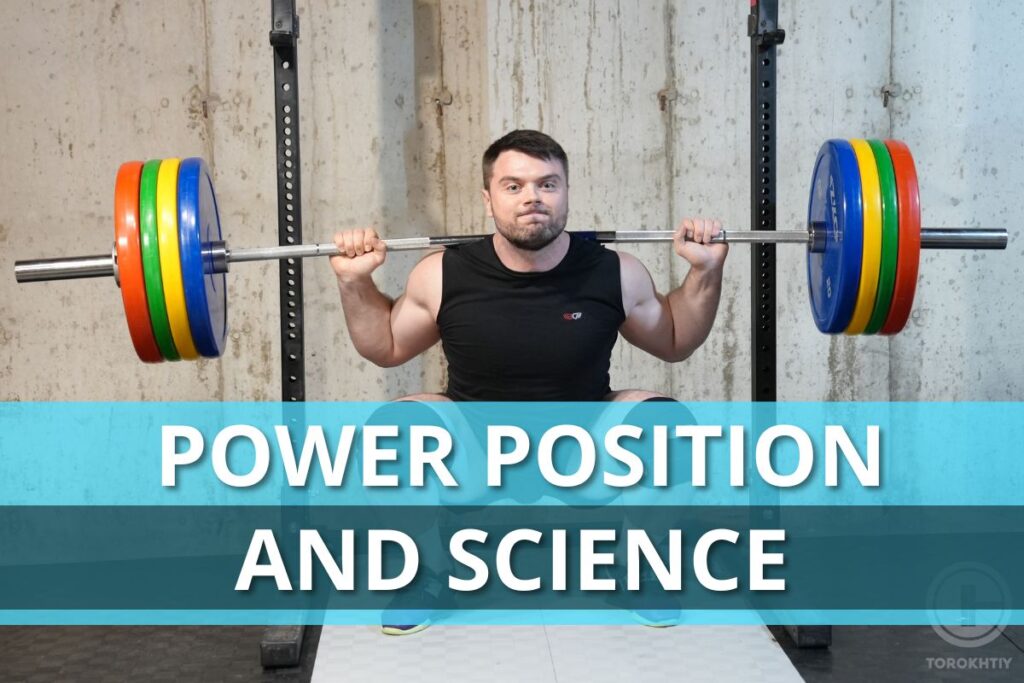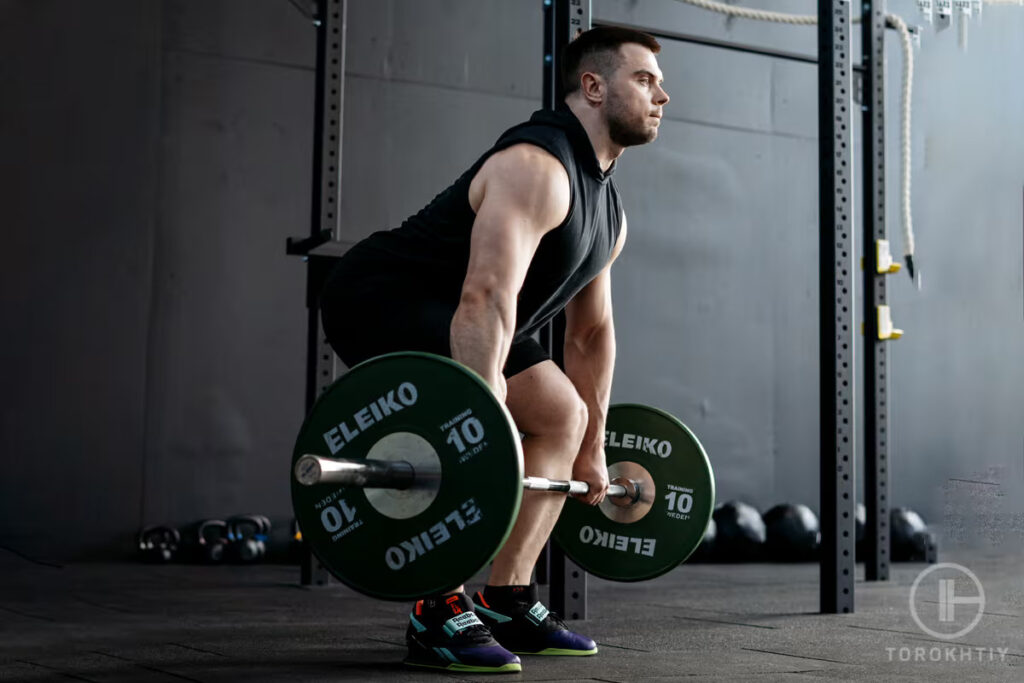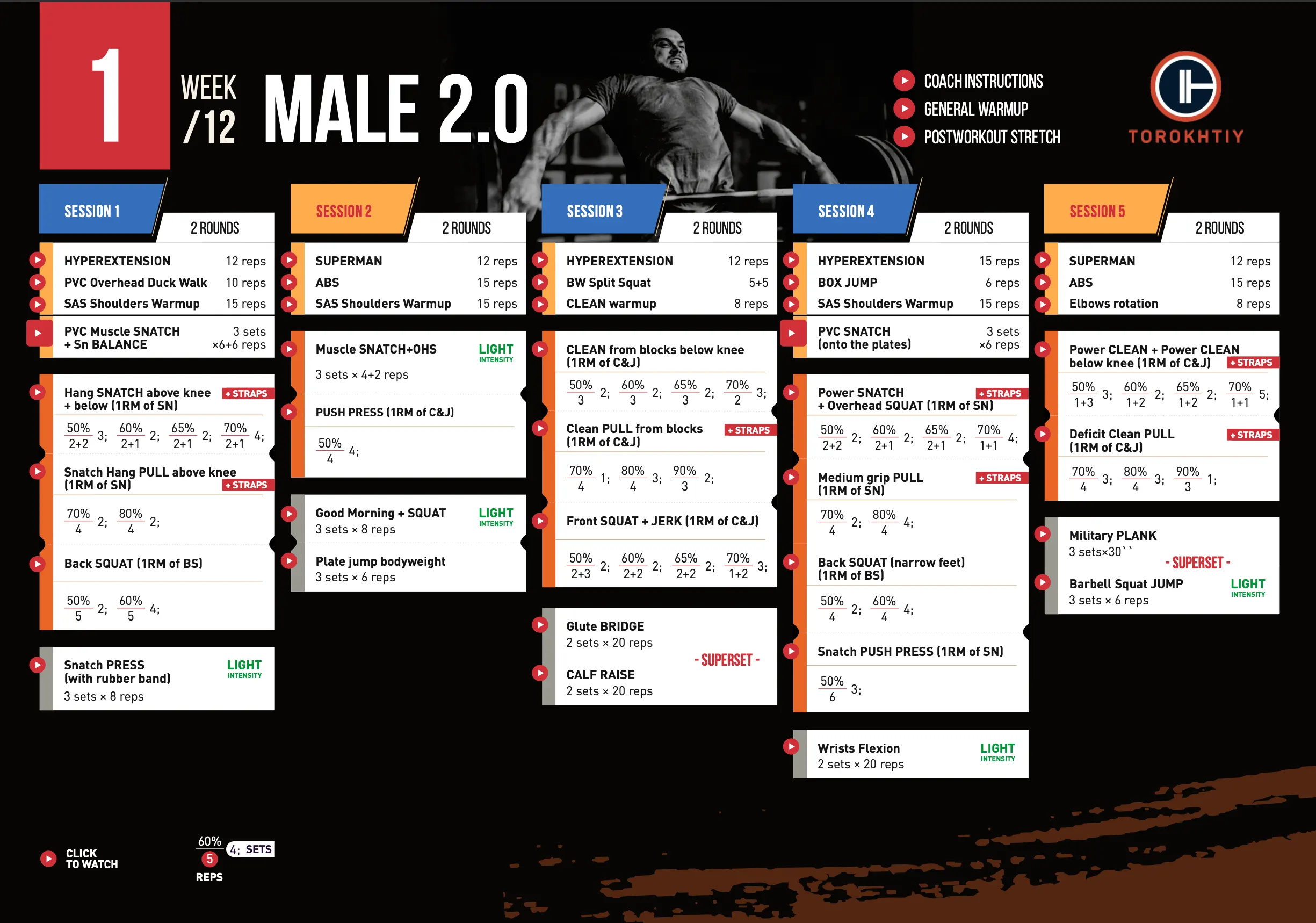Power Position And Science
Author:
Unlock your full potential by engaging with our experts and community! Have questions about your fitness journey or looking for expert advice on weightlifting techniques? Don’t hesitate — leave a comment below and Sergii Putsov will provide a personalized answer and insights to help you reach your goals.
Torokhtiy is reader-supported. Some links are affiliate links, and we may earn a commission at no extra cost to you. See our disclosure page for details.

Everyone knows: in order to increase the competition results, it is first necessary to develop strength through special and special-auxiliary exercises. However, while constantly increasing power, weightlifters are not able to fully able to realize what they have gained due to the time limit imposed during performing competition exercises. It is especially true for the SNATCH, where the barbell should be lifted to a much higher height than when lifting the barbell to the chest. At the same time, the maximum height of the barbell’s flight is determined mainly by the ability of the athlete’s neuromuscular apparatus to manifest explosive power right from the start, and also because of the nature of intermuscular coordination.
So what are the power skills that affect the most important part of the snatch performance – the power position?
Follow us!

Free!
Get a 2-week Weightlifting Program as a bonus for the subscription to kickstart your training plan!

Free!
The results of many studies have shown that certain tests (long jump from a stationary position, jumping for height, squats with a barbell on the shoulders and a deadlift) give a good indication of what the results in the SNATCH will be for any given athlete (the closer the figure is to 1, the stronger the interconnection). See Table 1.
You may like it:
- Detailed Olympic Weightlifting Program For Beginners
- 12-Week Weightlifting Program For Women (Detailed Example)
- Create Your Olympic Weightlifting Program (Examples Included)
TABLE 1
Indicating the extent of interdependence of variable quantitiesJump for height
| TESTS | Jump for height | Long Jump | Squat | Deadlift |
|---|---|---|---|---|
| SNATCH | 0,65 | 0,72 | 0,67 | 0,75 |
Also, many studies indicate that the temporal characteristics of the power position are also in close, but inverse, proportion to the best result obtainable in the SNATCH.
What is shown by these results is that as the result increases, the duration of the second pull is shortened and the time of the power position is reduced. Because of this, the result of the SNATCH is largely determined by the duration of the amortization phase and the entire power position. See Table 2.

TABLE 2
Correlation coefficients between tests and the power position in the SNATCH
| TIME parameters | Long jump | Jump for height | Squat | Deadlift |
|---|---|---|---|---|
| Second pull duration | – 0,75 | – 0,73 | 0,11 | 0,23 |
| Power position duration | – 0,77 | – 0,75 | 0,15 | 0,11 |
From Table 2 it follows that tests reflecting the level of development of absolute strength (the result in squats and deadlift) are practically unrelated to the time structure of the power position in the SNATCH. Regarding the tests that characterize the level of development of speed-strength skills (long jump and high jump), those are actually in close inverse proportional relationship, i.e. the higher the level of development of these skills, the faster an athlete performs the power position, and the greater the athlete’s overall result will be.
All the tests mentioned above mainly characterize the reduction of the quadricep muscles in the hips and the back muscles.
In previous complex studies of Olympic weightlifting techniques, it was noted that during the amortization phase, hamstring muscles are actively involved in the work. Their active reduction allows an athlete to bend their legs at the knee and ankle joints quickly during the third phase of the movement, and simultaneously stretch the quadrangular muscles of the thigh. In so doing, they provide accumulation of additional reactive forces for quick acceleration. See Table 3
TABLE 3
Correlation coefficients between the tests and strength of hamstrings
| Tests | Depreciation Phase Time | Amplitude of Knee Joint Bending | Height of Jump |
|---|---|---|---|
| Strength of the Hamstring Muscles | – 0,86 | – 0,56 | 0,70 |
This table shows that with an increase of hamstrings power, the depolarization phase is performed much faster and with less flexion of the legs and the knee joints, which creates more favorable conditions for carrying out the power position.
To sum up, we can say SNATCH technique is closely related to the level of development of speed-strength skills. The temporal structure of the power position is mainly determined by the level of development of the speed-strength skills of the quadriceps femoris muscle. Remember, in order to improve the power position technique in SNATCH along with the traditional jump exercises, it is necessary to practice exercises that improve the strength of hamstrings.
From my future book
You might be interested in:
Why Trust Us?
With over 20 years in Olympic weightlifting, strength training, nutrition coaching, and general fitness our team does its best to provide the audience with ultimate support and meet the needs and requirements of advanced athletes and professional lifters, as well as people who strive to open new opportunities and develop their physical capabilities with us.
By trusting the recommendations of our certified experts in coaching, nutrition, and sports training programming, as well as scientific consultants, and physiotherapists, we provide you with thorough, well-considered, and scientifically proven content. All the information given in the articles concerning workout programming, separate exercises, and athletic performance, in general, is based on verified data.
The product testing process is described in more detail here.
Author: Sergii Putsov
Head of Sport Science, PhD
Best Results: Snatch – 165 kg,
C&J – 200 kg
Sergii Putsov, Ph.D., is a former professional weightlifter and National team member, achieving multiple medals in the 94 kg weight category at national competitions. With a Master’s degree in “Olympic & Professional Sport Training” and a Sport Science Ph.D. from the International Olympic Academy, Greece, Sergii now leads as the Head of Sport Science. He specializes in designing training programs, writing insightful blog articles, providing live commentary at international weightlifting events, and conducting educational seminars worldwide alongside Olympic weightlifting expert Oleksiy Torokhtiy.




Still have questions after reading our article? Unlock your full potential by engaging with our experts and community! Don’t hesitate — leave a comment below and Sergii Putsov will provide a personalized answer and insights to help you reach your goals.